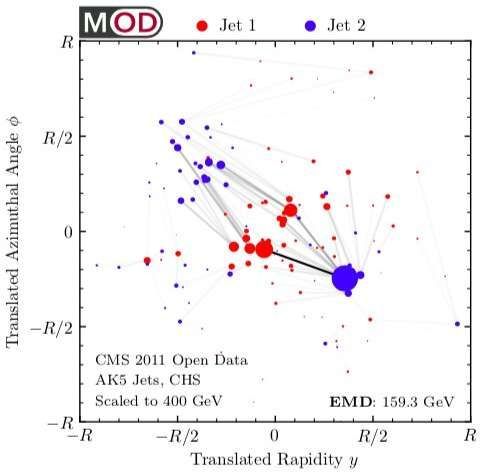Researchers at the Massachusetts Institute of Technology (MIT) have recently developed a metric that can be used to capture the space of collider events based on the earth mover’s distance (EMD), a measure used to evaluate dissimilarity between two multi-dimensional probability distributions. The metric they proposed, outlined in a paper published in Physical Review Letters, could enable the development of new powerful tools to analyze and visualize collider data, which do not rely on a choice of observables.
“Our research is motivated by a remarkably simple question: When are two particle collisions similar?” Eric Metodiev, one of the researchers who carried out the study, told Phys.org. “At the Large Hadron Collider (LHC), protons are smashed together at extremely high energies and each collision produces a complex mosaic of particles. Two collider events can look similar, even if they consist of different numbers and types of particles. This is analogous to how two mosaics can look similar, even if they are made up of different numbers and colors of tiles.”
In their study, Metodiev and his colleagues set out to capture the similarity between collider events in a way that is conceptually useful for particle physics. To do this, they employed a strategy that merges ideas related to optimal transport theory, which is often used to develop cutting-edge image recognition tools, with insights from quantum field theory, a construct that describes fundamental particle interactions.










Comments are closed.